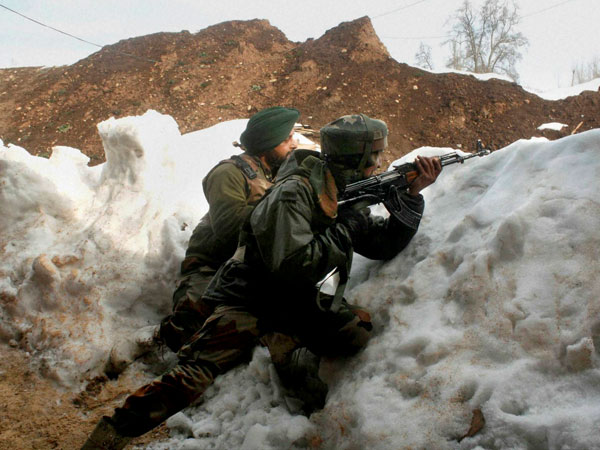
India's military preparedness: Crying out for modernisation and reforms

The first and foremost issue to be addressed by Prime Minister Narendra Modi's government is modernization of the equipment inventory of the forces. Be it the decades old case of induction of 155mm guns or additional submarines, the pending contract for fighter aircraft or replacement of the aging helicopter fleet - a new dynamism is the need. Even the basic weapon of a soldier, the INSAS rifle currently in use, needs to be replaced.
Our defence acquisition procedures and offset clauses need a relook. The steps required have already been in focus with the new ministry. However, to hasten up equipment induction, the whole process of lengthy, cumbersome and rigid equipment trials needs a relook.
Building domestic capability by involving the private sector is an immediate necessity. There is also a requirement to revamp our Ordinance Factory Board and factories. Aspects of accountability and productivity require institutionalization in the entire defence production establishment. Similarly, the DRDO requires a new competitive dynamism when pitted against government-aided research and development by the private sector. The long-term solution lies in enhancing domestic capabilities. Finally, the practice of blacklisting foreign companies for misdemeanours cannot finish with blacklisting them. Such cases need to be pursued to the very end and recipients of favours, be they bureaucrats, soldiers or politicians, need to be identified and prosecuted.
The integration of the service headquarters with the defence ministry has remained a cosmetic exercise. Similarly, jointmanship, involving integration of the three services, has not progressed beyond a command at Port Blair, the Strategic Forces Command in Delhi and a few training institutions. The Headquarters Integrated Defence Staff has also not evolved to position a Chief of Defence Staff (CDS) at its apex.
Today, military operations are inevitably in the joint services domain, while strategic issues are inter-ministerial. There is a requirement to integrate the defence ministry and the service headquarters by cross-pollination of services and civilian officers in appointments hitherto considered the exclusive preserve of the other. The appointment of a CDS and ensuring he has a direct advisory role to the political leadership remains an essential imperative of this entire exercise. Even if the CDS be initially a co-equal of the other three chiefs or even vice chiefs, but has direct access to political leadership sans a bureaucratic screen in between, a fair beginning can be said to have been made.
Simultaneously, while giving a fillip to joint operations there is a requirement to bring in greater inter-operability at the functional levels of the forces with joint planning, joint conduct, compatibility in communications and operating procedures being a part of a long wish list.
Currently, the revenue expenditure consumes the larger portion of the defence budget, leaving inadequate funds for modernization. The Chinese are spending liberally on force modernization, thus enhancing the existing gap between us to overwhelming levels. At $39.2 billion, we are spending a third of China's $119.5 billion (Pentagon 2013 figures). Defence allocations have to be pegged around 2.5 percent of the GDP to meet a two-front threat scenario that we envisage.
The mountain strike corps needs to complete its raising faster. Resources for this formation need to be entirely incremental rather than a product of milking existing formations, as is often the case.
The internal security situation in the country continues to be tenuous. Our police forces have neither the resources nor the quality of leadership required to combat the threats. We have old insurgencies still simmering as new ones get into stride. Insurgencies cannot be resolved by a military response alone. The political leadership needs to address issues of governance, enunciate the state's political response while simultaneously addressing socio-economic issues. The role of the services in combating insurgencies must necessarily reduce progressively.
Our intelligence capabilities also require a boost. The proposed National Counter Terrorism Centre needs to be established. The National Investigation Agency also requires strengthening. The fragmented intelligence community needs to be better coalesced and synthesized to achieve synergies.
The unchecked migration from our neighbouring countries disrupts our demographic profile and imperils the Indian democracy. It may be worthwhile to evaluate the success or failure of nominating the BSF as the primary border management force. In the northeast, with alarming migration, a review needs to be undertaken and the army tasked with border management. The BSF will need to be placed under command of the army in such areas for achieving better results than we have achieved so far. Our political leadership in these states must also be held accountable for easing the grant of citizenship to the immigrants with vote-bank politics in view. Cross-border infiltration is one of the biggest challenges we face.
Infrastructure in the border areas has also remained unattended. Its paucity seriously inhibits employment of forces. The economic condition of these areas also degrade our societal cohesion. Economic growth will harness greater nationalistic fervour among the populace in these border areas and strengthen our nation at its vulnerable peripheries.
In addition to conventional military strength, our missile reach, cyber capabilities, space platforms and special forces will be the key drivers in deciding our ability to protect and project our national interests. The early creation of inter-service commands to address these areas is an imminent requirement.
IANS


 Click it and Unblock the Notifications
Click it and Unblock the Notifications

































